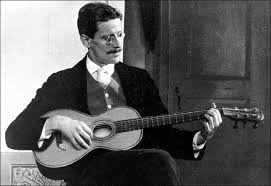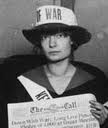“There is but one truly serious philosophical problem and that is suicide. Judging whether life is or is not worth living amounts to answering the fundamental question of philosophy. All the rest — whether or not the world has three dimensions, whether the mind has nine or twelve categories — comes afterwards. These are games; one must first answer.”
Albert Camus
It was just around three o’clock on an overcast afternoon and I was taking my Sunday constitutional. I had just crossed Houston Street when I heard the sirens coming from all directions. A moment later at 1st Ave and 2nd St when the cop cars sped past me going the wrong way in a one-way street, I knew that whatever was happening was very serious, indeed. I walked in the direction they drove to see the flashing lights of cop cars join the flashing lights of cop cars that had already arrived.
There too was as an engine of the FDNY. The street was blocked. The vehicles were now cramped together on the corner of A and 2nd St and they had all silenced their sirens. In fact, despite the fact that a crowd of perhaps 30 people had gathered there, drawn by the flashing lights or curiosity or morbidity or whatever, the entire block, citizen and civil servant, seemed to be enveloped in a very un-New York City silence.
All eyes were frozen on a young man standing on his fire escape five flights above the sidewalk.
He was pale and wearing shorts and a tee shirt, on the tall side, perhaps 35 years old. What became immediately and chillingly clear was that standing in front of all of us was a fellow soul who, for whatever reasons had been driven to the place where life itself had become unbearable – “not worth living,“ in the words of Camus — and a permanent solution to that intolerable state seemed to be just a little movement away. One move and then for the young man, a very different kind of silence.
The window to the right of the man was open and one could hear, just barely, muffled voices emanating out of it. Perhaps even a conversation was taking place but, despite the silence, it was impossible to make out a single word. From time to time the man moved a step or so in either direction or stood tall or reached out to the grab the fire escape. Most of the time he was absolutely motionless. Meanwhile the murmuring from the window continued as did the silence in the street below.
At one point the window below the murmuring suddenly opened and a cop filled the square. For a moment he stuck out his head and studied the man on the platform above him, the man whose life it was his job to save. Then, just as suddenly he retreated back into the darkness.
Somewhere close to where I stood, just barely audible I became aware of a woman I could not see reciting the Hail Mary in Spanish. She would finish it and then begin again, adding to the bizarre sense that something almost sacramental was taking place.
A young African American who wandered into the scene asked me, almost in a whisper, “What’s going on? Was the man threatening to jump? “
“Yes, “ I answered, adding for whatever reason, “ It’s a hard world. “
“Yes, “ she replied. “ It really is. “
Then we watched in silence.
Once or twice I exchanged glances with the man to my right but said nothing.
The murmuring continued and the man seemed to respond. Slowly, very, very slowly and in fits and starts, he crawled head first into his window. I had no idea how much time passed. Time seems bendy in such moments. How long was I there? Five minutes ?. Eight minutes at most ? And yet somehow it seemed much, much longer.
All I know was that, at last, he vanished into his window. He was safe. And, in some sense that I did not consider until later, so were we. We, those who for whatever reason had gathered beneath him, were not to be witnesses to a primal struggle that ended in horror, not to witness a violent rejection of the sacrality of life, not to be told in the most graphic possible language that ‘Life was not worth living.”
I turned to leave. The young woman I spoke to touched my arm and looked into my face.
“Be safe, “ she said. Be safe.” “You too, “ I said.. “Be safe.”
The man to my right also met my eyes. He said nothing. He was not, I understood, the talking type. He nodded his head and patted me on the back in some sign of some kind of solidarity and walked east into the remains of his day.
And with these little gestures from two strangers I almost certainly will never see again, I was moved. I was moved because we strangers had shared something; something that could have gone terribly wrong and yet, for reasons we will never know, any more than we will know the reasons that drove the man to the edge, did not and would not .
We shared a moment of curiosity or concern or empathy, or fear, or understanding or even recognition or some combination of all of these — but it was something shared; something deeply human and even primal was felt and shared by the three of us and I suspect, on one level or other, every other person there.
As I walked on and reflected it occurred to me that we had inadvertently shared in something sacred: the sparing of a human life, asking Camus’s ultimate philosophical question and answering “yes.”
In a in a city ravaged by covid and savage inequality, in a country where trust and empathy are considered by many to be the characteristics of suckers and losers, in a world committing global suicide in plain sight and in slow motion, I’ll take it.
With gratitude, I’ll take it.











